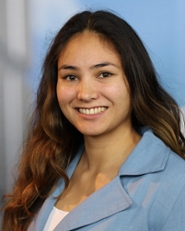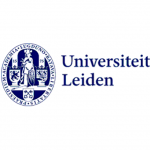
ΑΙhub.org
Finding unique drug structures with artificial intelligence and chemistry

By Bryce Benda
In the search for new medicines for diseases such as cancer, a Leiden team has developed a new workflow. This approach combines artificial intelligence (AI) with molecular modelling and is suitable for finding unknown and innovative drug structures, the researchers demonstrated.
Anti-cancer target
With their new method, the researchers of the Leiden Academic Centre for Drug Research (LACDR) and the Leiden Institute of Advanced Computer Science (LIACS) were able to find five substances with an inhibitory effect on a specific type of kinase. Kinases are enzymes that switch other proteins on or off and play an important role in the development of cancer. In their publication in the Journal of Chemical Information and Modeling, the team looked at so-called polypharmacology – drug development in which there are multiple targets in the body.
Polypharmacology
In classical drug development, scientists are looking for a drug that works on a single target in the body. The drug is the key, which only fits in one lock: the target in the body, often a protein. In so-called multi-target drug design, the drug can be represented as a master key that fits several targets at the same time. This is especially necessary for the treatment of complex diseases such as cancer and diabetes because these involve multiple physical processes. Moreover, multi-target drug design helps against resistance, Lindsey Burggraaff (first author and PhD candidate) explains: ‘The cancer cells in our example can become resistant to a drug with only one target, but with multiple targets in the body this chance is much smaller.’ A disadvantage of multi-target drug design is that it is more complex and time-consuming than the traditional approach.
The challenge
It started in December 2017 with a challenge, says Burggraaff. ‘A non-profit organisation led by American universities and several pharmaceutical companies regularly organises challenges, including this Multi-targeting Drug DREAM Challenge.’ Participants were instructed to find molecules that bind to multiple kinases. ‘There have already been found substances that are active on several kinases, but they all look very similar,’ says Burggraaff. ‘That’s why we wanted to find new and original hits. These hits then serve as a starting point for further drug research, like a template that you can optimise.’

Lindsey Burggraaff
A new strategy
Because the team wanted to find new and original molecules in a limited time, they also had to come up with a new strategy. Burggraaff: ‘In general, people choose either machine learning or computational chemistry in their search for medicines. We are now arguing that in the case of polypharmacology it is best to combine the two, especially if you want to find new structures in a short period of time.’
Training the computer
This works as follows: Burggraaff and her department gave the LIACS researchers an exercise set, which contained known molecules and their properties. Using machine learning, the computer scientists were able to train their computer model in such a way that it only extracted the active molecules from the set. For the challenge, they then applied this same model to a database of more than ten million substances. ‘This resulted in a quarter of a million potentially active molecules. An effective first filter,’ says the PhD candidate.
Lock and key
Then the pharmacologists of the LACDR set to work on structure-based research. ‘This involves simulation of the structure of your target on the computer, in this case, kinase enzymes,’ says Burggraaff. ‘The computer calculates whether the molecule that is tested fits into the target, like a key in a lock. This method is much more detailed than machine learning but also takes up much more time. That’s why the combination works so well.’
Ultimately, their efforts yielded five molecules that showed activity in lab tests. ‘Proof that our new way of working can be useful. By the way, it is not limited to kinase research, it can also be widely applied to other targets.’
Collaboration
The collaboration with LIACS stimulated the establishment of the Centre for Computational Life Sciences (CCLS) – a cluster of about forty scientists, including researchers from the Institute of Biology Leiden (IBL), the Mathematical Institute (MI), the Leiden Institute of Chemistry (LIC) and the Leiden University Medical Center (LUMC). ‘We speak to the scientists from the Computer Science department regularly, so that is how the collaboration for this paper started,’ says Burggraaff. She calls it a successful collaboration. ‘We only had three months for this challenge, and a lot of work to do. So we have been really pushing each other.’
Disciplines are growing closer together
‘The CCLS is a successful example of how the various classical disciplines are growing closer together on the cutting edge of computer science,’ says Gerard van Westen, last author. ‘With the SAILS programme, we are similarly combining the expertise of all faculties in the field of AI, but then on the level of the entire University. You can see that there are similar challenges in very different fields that we can solve together.’ In the future, Burggraaff and Van Westen expect that projects such as this, in which the expertise of various scientists is used for a concrete purpose, will lead to new insights and innovative medicines.
Read the research article in full
Lindsey Burggraaff et al, Successive Statistical and Structure-Based Modeling to Identify Chemically Novel Kinase Inhibitors, Journal of Chemical Information and Modeling (2020)










